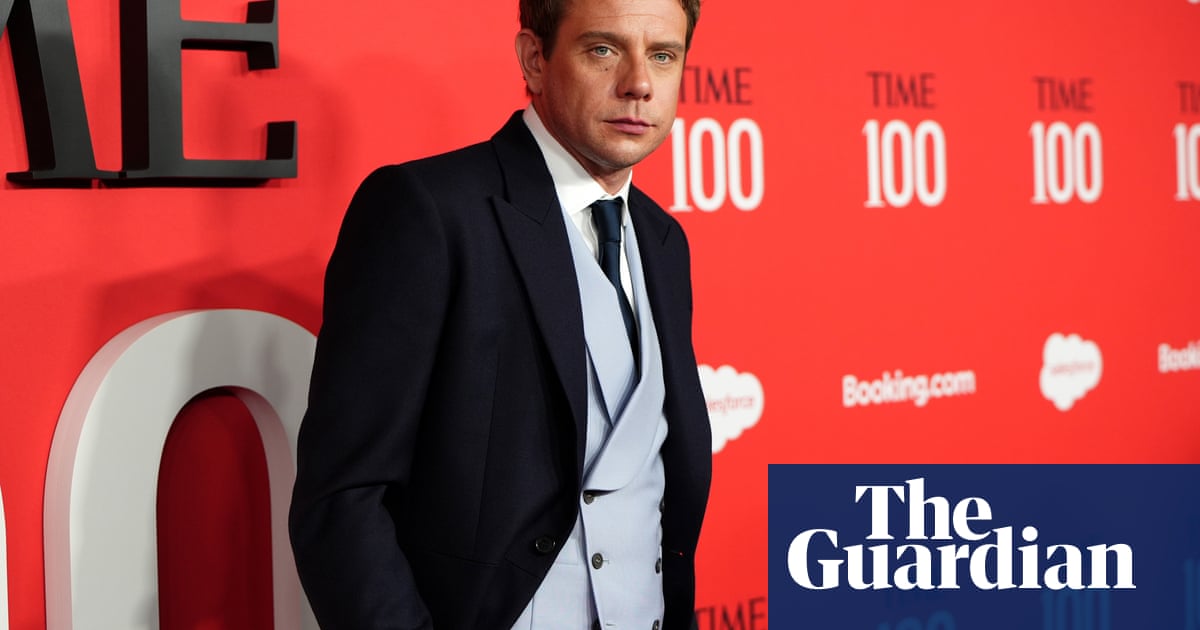Long before the designer Jonathan Anderson stepped down from his role at Loewe in March, it was rumoured he would be heading for Dior. So when it was finally announced – six months after Dior’s menswear designer left, and four days after its womenswear head,Maria Grazia Chiuri, showed a collection in Rome – it surprised no one.
Yet Anderson’s newfound position at luxury’s centre of gravity still setsDior, a grand fashion institution, careering down an experimental path. As Delphine Arnault, the chair and CEO of Christian Dior Couture, told Vogue Business: “For any house, having new artistic direction can be a challenge.”
A critical darling and commercial success, Anderson made Loewe into a fashion week hype machine and Hollywood powerhouse while creating shoes with perspex cracked eggs for heels,art-directing Daniel Craig’s post-Bond relaunch in specs and quirky knits, and casting the late Dame Maggie Smith as a model in an advertising campaign at the age of 88.
Anderson’s role at Loewe was also lucrative. Since he took over, the brand’s annual revenues increased fivefold. With the move to Dior he will now probably become the most prolific designer in fashion; assuming he continues to work on his own brand (JW Anderson), as well as his collaboration with Uniqlo, it is expected he will show 18 collections a year.
The world of high fashion is a long way from Anderson’s early days inNorthern Ireland. He was born in 1984 in Magherafelt, a town otherwise famous for cropping up in Seamus Heaney’s early work, and went to school during the Troubles. Raised Protestant, he has spoken in the past about passing through checkpoints on his way to school. “It does make you quite hard because emotionally you were toughened by that,” he recently told New York Magazine.
Anderson’s father, Willie, was captain of the Ireland rugby team, and something of a character; in 1980, he spent three months in an Argentininan prison for stealing the national flag from outside a government building while on tour. Anderson’s mother, Heather, was an English teacher. As parents, they were wholly supportive of his career. “You’ll do anything for your kid if you believe their dream is not something that’s beyond them,”said his father, adding that they “re-mortgaged the house to try and get him through certain points”.
Anderson left home aged 18 to study acting in Washington DC, but changed his mind, returning home to work in the Dublin department store Brown Thomas. It was around this time he got into fashion, though he was turned down by every school he applied to except the London College of Fashion, which was piloting a new menswear course. He went on to launch his namesake brand JW Anderson in 2008. LVMH took a minority stake in the brand in 2013, and Anderson worked at Loewe from 2013 until spring this year.
One of a new raft of power designers to share an art-college enthusiasm for avant-garde projects, he was never a designer in the pure “cutting and draping” sense (though he completed his degree), relating more to Miuccia Prada, who studied political science before going into fashion.
Anderson’s arrival at Dior is part of a changing of the guard at leading houses that in recent months has seen Chanel appoint the French-Belgian designer Matthieu Blazy and Gucci sign the Georgian fashion designer Demna. Dior’s announcement is the latest move in a frenzied round of musical chairs at fashion’s top table, the impact of which will be seen at fashion weeks in the second half of 2025.
An immediate consequence of the recent personnel changes has been a rollback of female representation in fashion’s most prestigious roles.
Anderson replaces Chiuri, Dior’s first female designer, who modernised the ladylike codes of the house while supporting and referencing a range of female artisans and artists. She became well-liked for attempting – however clumsily with her “We should all be feminists” T-shirts – to use her might and financial power to modernise feminism in fashion. With the exception of the appointments of two British female designers – Sarah Burton at Givenchy, and Louise Trotter, who replaces Blazy at Bottega Veneta – the incoming class of designers is overwhelmingly male.
Still, as far as the male gaze is concerned, Anderson is well known for covering up the wearer’s body, albeit with anthuriums and deflated balloons as well as actual clothes. He created Rihanna’s bump-shaped red leather corset worn at the 2023 Super Bowl for an internet-breaking pregnancy reveal, and collaborated with the sculptor Lynda Benglis on a stage set that turned a Paris show space into a gallery. He also launched the most in-demand handbag of modern times, the Puzzle bag, and has dressed Beyoncé, Zendaya and Greta Lee.
Anderson’s references have always come from outside the fashion world, namely craft, surrealism and cultural history (one JW Anderson show was inspired by Rasputin gone skiing). As a result, the traditional narrative – in which young designers opt into commercial success by bending their taste toward the mainstream – has so far failed to apply in the case of Anderson, who has become more avant garde rather than less as his career has progressed.
Yet however esoteric his designs, Anderson’s appointment suggests the mega-conglomerate LVMH is valuing creativity over celebrity. As Arnault said: “I think this is going to be great for the maison. There will be consistency and coherence in the products, but also in terms of communication, I think our message will be much clearer.”
The idea is that Anderson will bring some of his own team and hopefully, his customers will follow suit. Whatever the hype surrounding his appointment, he is still tasked with turning around the fortunes of Dior, which saw sales decrease from €9.5bn in 2023 to €8.7bn in 2024, per an HSBC estimate. But as Arnault has said: “Ittakes a few seasonsto see exactly what the vision is. But I think he’s totally energised by the idea.”
